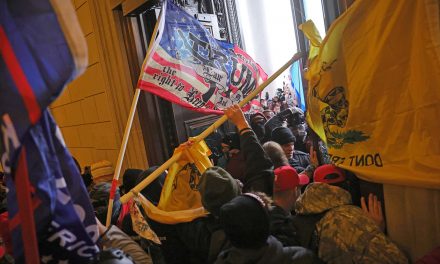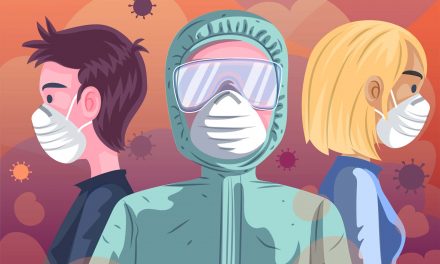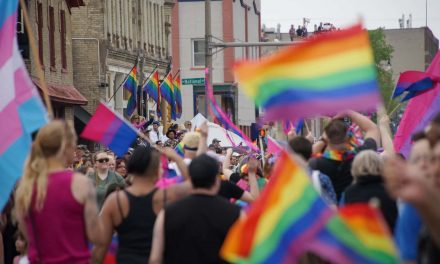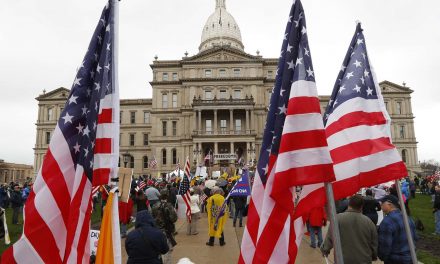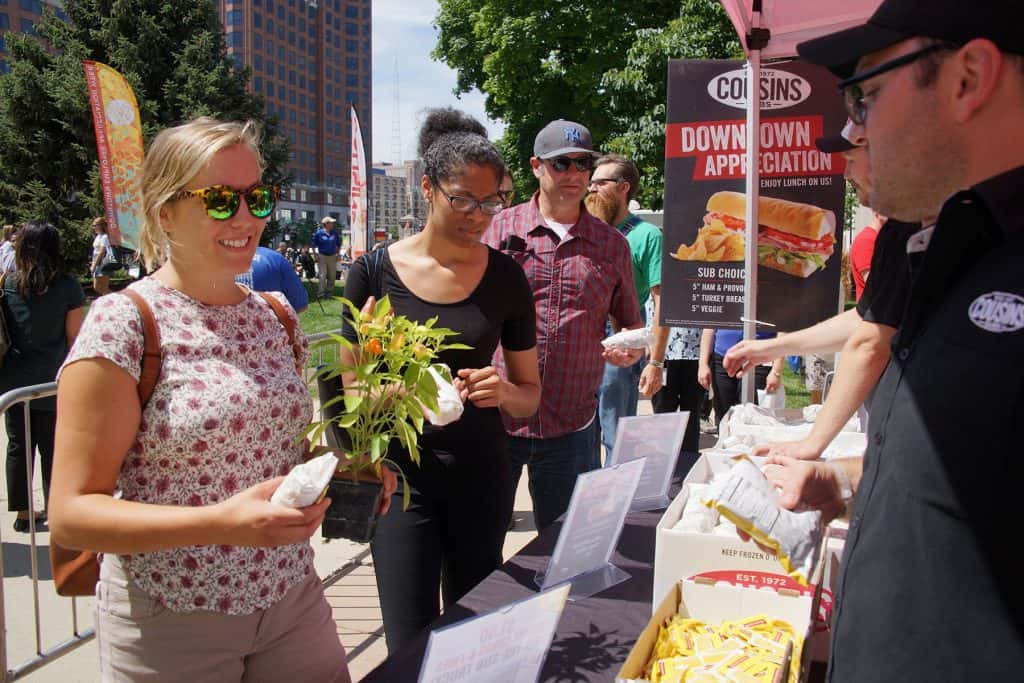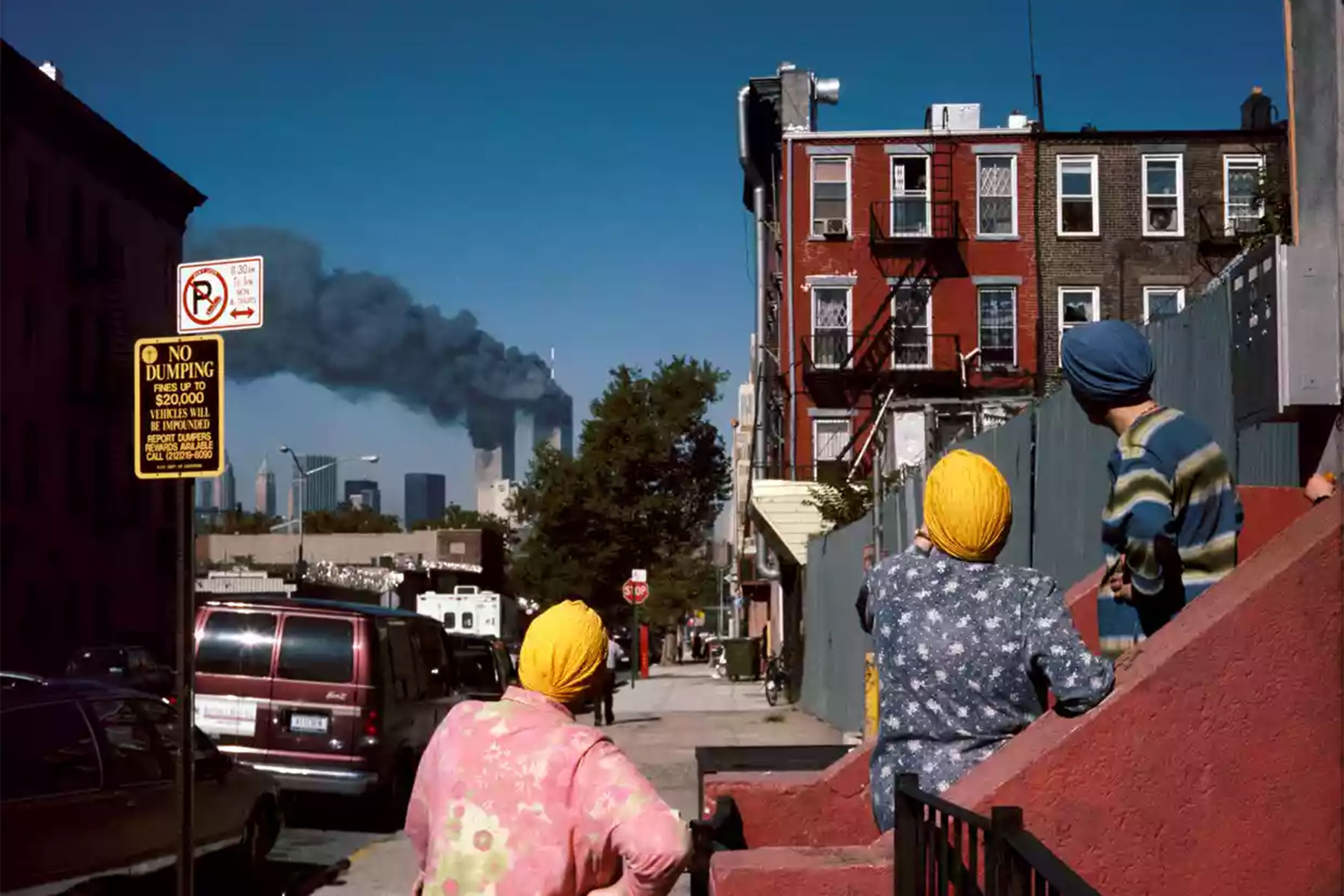
Taken on South 8th Street Williamsburg between Berry and Wythe on a Zeiss Ikon that my Grandmother had swapped for cigarettes during the Berlin airlift. – Toby Amies
When 9/11 happened, I’d been living on South 8th Street in Williamsburg, New York, for about a year. To the right, you can see a pale awning – that was my studio, a windowless shed. My apartment was the top flat in that three-story red building further down.
I don’t remember the exact time I took this, though you could work it out from the state of the towers. I remember I had got up late – I’d been DJing the night before – and I needed to go to the bank, which was a block away. As I opened the door, it was such a beautiful day with an extraordinary crisp light and beautiful colours, that I thought: “Ooh, I’ll take my camera.” I went back inside and grabbed the ancient Zeiss Ikon that my grandmother had got in a swap for cigarettes during the Berlin airlift.
When I came out of the bank, a quarter of an hour later, I turned on to South 8th Street and noticed a group of Hasidic Jews and Puerto Ricans staring down the street. You don’t normally see those two groups together, so I took a photograph. I then walked to the corner to see what they were looking at and saw the towers smoking. I took another picture, then this one.
I use a camera to help me make sense of reality. But photography can also distance you from something. This is a photograph of an atrocity, and I’m still slightly appalled that my response was to take a picture of it. But I recognize that there was nothing I could have done at this point. The attack was such an enormous tear in normality, it was almost impossible to process. As a photographer, I’m proud I was processing the aesthetics of it; but as a human being, I’m ashamed.
I went straight home and woke my girlfriend up. She loved New York City. One of the reasons we’d rented our apartment was its extraordinary view of downtown. I remember holding her and experiencing it all through her sense of something she adored being under attack. We saw both buildings collapse through our bedroom window. My landlord Simon, who was Hasidic, came to the flat to watch TV. I don’t think he had access to one elsewhere. I imagine that the Hasidic women in the photograph didn’t either.
There’s a game we used to play in big cities as children. You would stand on a corner staring up and see how many people you could get to do the same. Here, it was this terrible thing that everyone was glued to. And because of the grid system of the city, everyone was staring down exactly the same line. Today, everyone would have their phones out.
The street itself physically draws a line between individual experiences of 9/11 and the people who lost their lives in the twin towers. So many things that happened to me on that street were important, but in the context of what occurred at the end of it, my personal experience feels trivial.
I had walked out of my studio with a sense of freedom, an “I can do whatever I want today, I’m an artist” type of feeling. During the 15 minutes I was in the bank, the world changed.
Dale Berning Sawa
Toby Amies
Originally published on The Guardian as Toby Amies’s best photograph – a New York street as 9/11 happened
Help deliver the independent journalism that the world needs, make a contribution of support to The Guardian.

